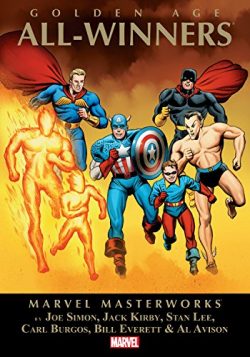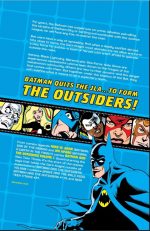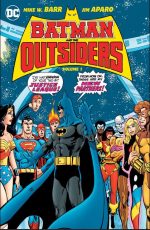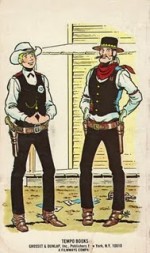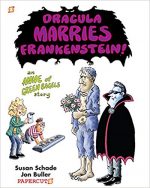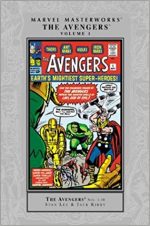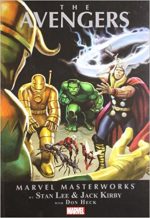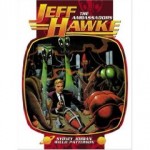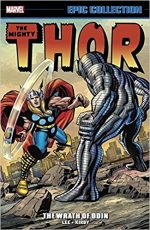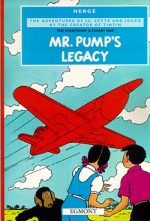By René Goscinny & Albert Uderzo, translated by Anthea Bell & Derek Hockridge (Orion/Hodder-Darguad/Brockhampton)
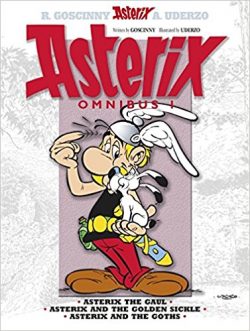
Omnibus ISBN: 978-1-44400-423-6
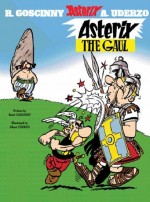
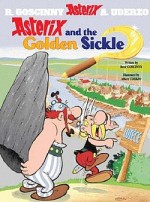
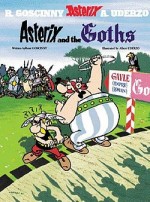
Individual Orion ISBNs: 978-0-75286-605-5: 978-0-75286-613-0 & 978-0-75286-615-4
Sorry, Baudelaire, Balzac Proust, Sartre, Voltaire, Zola and all you other worthy contenders; Asterix the Gaul is probably France’s greatest literary export.
The feisty, wily little warrior who fought the iniquities and viewed the myriad wonders of Julius Caesar’s Roman Empire with brains, bravery and – whenever necessary – a magical potion imbuing the imbiber with incredible strength, speed and vitality, is the go-to reference all us non-Gallic gallants when we think of France…
In eager anticipation of the publication of the 37th Asterix volume next month, here a little refresher course for the classicist cognoscenti and a gentle but urgent plea to the uninitiated to get their collective fingers out and get au fait with one of Earth’s genuine comics phenomenons…
The diminutive, doughty hero was created at the very end of the 1950s by two of the art-forms greatest masters, Ren̩ Goscinny & Albert Uderzo, and even though the perfect partnership ended in 1977, and Uderzo no longer crafts the comedic chaos, the creative wonderment still continues Рalbeit at a slightly reduced rate of rapidity.
René Goscinny is arguably the most prolific and remains one of the most-read writers of comic strips the world has ever known. Born in Paris in 1926, he grew up in Argentina where his father taught mathematics. From an early age René showed artistic promise, and studied fine arts, graduating in 1942.
In 1945 while working as junior illustrator in an ad agency his uncle invited him to stay in America, where he found work as a translator. After National Service in France he returned to the States and settled in Brooklyn, pursuing an artistic career and becoming in 1948 an assistant for a little studio which included Harvey Kurtzman, Will Elder, Jack Davis and John Severin as well as European giants-in-waiting Maurice de Bévère (Morris, with whom from 1955-1977 Goscinny produced Lucky Luke) and Joseph Gillain (Jijé).
He also met Georges Troisfontaines, head of the World Press Agency, the company that provided comics for the French magazine Spirou.
After contributing scripts to Belles Histoires de l’Oncle Paul and Jerry Spring Goscinny was promoted to head of World Press’ Paris office where he met his ultimate creative collaborator Albert Uderzo. In his spare time Rene created Sylvie and Alain et Christine with Martial Durand (Martial) and Fanfan et Polo, drawn by Dino Attanasio.
In 1955 Goscinny, Uderzo, Charlier and Jean Hébrard formed the independent syndicate Édipress/Édifrance, creating magazines for business and general industry (Clairon for the factory union and Pistolin for a chocolate factory). With Uderzo René generated Bill Blanchart, Pistolet and Benjamin et Benjamine, and even illustrated his own scripts for Le Capitaine Bibobu.
Goscinny clearly patented the 40-hour day. Using the nom-de-plume Agostini he wrote Le Petit Nicholas (drawn by Jean-Jacques Sempé) and in 1956 began an association with the revolutionary magazine Tintin, writing for various illustrators including Attanasio (Signor Spagetti), Bob De Moor (Monsieur Tric), Maréchal (Prudence Petitpas), Berck (Strapontin), Globule le Martien and Alphonse for Tibet, Modeste et Pompon for André Franquin, as well as the fabulous and funny adventures of the inimitable Indian brave Oumpah-Pah with Uderzo. He also wrote for the magazines Paris-Flirt and Vaillant.
In 1959 Édipress/Édifrance launched Pilote, and Goscinny went into overdrive. The first issue featured re-launched versions of Le Petit Nicolas, Jehan Pistolet/Jehan Soupolet, new serials Jacquot le Mousse and Tromblon et Bottaclou (drawn by Godard) plus a little something called Asterix the Gaul, inarguably the greatest achievement of his partnership with Uderzo.
When Georges Dargaud bought Pilote in 1960, Goscinny became Editor-in-Chief, but still found time to add new series Les Divagations de Monsieur Sait-Tout (Martial), La Potachologie Illustrée (Cabu), Les Dingodossiers (Gotlib) and La Forêt de Chênebeau (Mic Delinx).
He also wrote frequently for television but never stopped creating strips such Les Aventures du Calife Haroun el Poussah for Record illustrated by Swedish artist Jean Tabary. A minor success, it was re-tooled as Iznogoud when it transferred to Pilote.
Goscinny died – probably of well-deserved pride and severe exhaustion – in November 1977.
Alberto Aleandro Uderzo was born on April 25th 1927, in Fismes, on the Marne, a child of Italian immigrants. As a boy reading Mickey Mouse in Le Pétit Parisien Alberto dreamed of becoming an aircraft mechanic. He showed artistic flair from an early age and became a French citizen when he was seven. At 13 years old he became an apprentice of the Paris Publishing Society, learning design, typography, calligraphy and photo retouching.
When WWII broke out he spent time with farming relatives in Brittany, joining his father’s furniture-making business. Brittany beguiled Uderzo: when a location for Asterix’s idyllic village was being decided upon the region was the only choice.
In the post-war rebuilding of France Uderzo returned to Paris and became a successful artist in the country’s burgeoning comics industry. His first published work, a pastiche of Aesop’s Fables, appeared in Junior and in 1945 he was introduced to industry giant Edmond-François Calvo (whose masterpiece The Beast is Dead is long overdue for the world’s closer attention…).
Young Uderzo’s subsequent creations included the indomitable eccentric Clopinard, Belloy, l’Invulnérable, Prince Rollin and Arys Buck. He illustrated Em-Ré-Vil’s novel Flamberge, worked in animation, as a journalist, as an illustrator for France Dimanche, and created the vertical comic strip ‘Le Crime ne Paie pas’ for France-Soir. In 1950 he illustrated a few episodes of the franchised European version of Captain Marvel Jr. for Bravo!
Another inveterate traveller, the young artist met Goscinny in 1951. Soon fast friends, they decided to work together at the new Paris office of Belgian Publishing giant World Press. Their first collaboration was in November of that year; a feature piece on savoir vivre (how to live right or gracious living) for women’s weekly Bonnes Soirée, after which an avalanche of splendid strips and serials poured forth.
Jehan Pistolet and Luc Junior were created for La Libre Junior and they produced a Western starring a very Red (but not so American) Indian who evolved into the delightful and (eventually) popular Oumpah-Pah. In 1955 with the formation of Édifrance/Édipresse, Uderzo drew Bill Blanchart for La Libre Junior, replacing Christian Godard on Benjamin et Benjamine and in 1957 added Charlier’s Clairette to his portfolio.
The following year later, he made his Tintin debut, as Oumpah-Pah finally found a home and a rapturous audience. Uderzo also illuminated Poussin et Poussif, La Famille Moutonet and La Famille Cokalane
When Pilote launched in 1959 Uderzo was the major creative force for the new magazine, limning Charlier’s Tanguy et Laverdure and a little something called Asterix…
Although Asterix was a massive hit from the start, Uderzo continued working with Charlier on Michel Tanguy, (subsequently Les Aventures de Tanguy et Laverdure), but soon after the first ancient world adventure was collected as Astérix le gaulois in 1961 it became clear that the series would demand most of his time – especially as the incredible Goscinny never seemed to require rest or run out of ideas (after the writer’s death, the publication rate dropped from two per year to one volume every three to five).
By 1967 Asterix occupied all Uderzo’s time and attention. In 1974 the perfect partners formed Idéfix Studios to fully exploit their inimitable creation and when Goscinny passed away three years later, Uderzo had to be convinced to continue the adventures as writer and artist, producing a further ten volumes.
According to UNESCO’s Index Translationum, Uderzo is the tenth most-often translated French-language author in the world and the third most-translated French language comics author – after his old mate René Goscinny and the grand master Hergé.
So what’s it all about?
Like all entertainments the premise works on two levels: as an action-packed comedic romp of sneaky and bullying baddies coming a-cropper for younger readers and as a pun-filled, sly and witty satire for older, wiser heads, transformed here by the brilliantly light touch of master translators Anthea Bell & Derek Hockridge (who played no small part in making the indomitable little Gaul so very palatable to the English tongue).
Originally published in Pilote #1-38 (29th October 1959-4th July 1960, with the first page appearing a week earlier in a promotional issue #0, distributed on June 1st 1959), the story was set on the tip of Uderzo’s beloved Brittany coast in the year 50BC. Here a small village of redoubtable warriors and their families resisted every effort of the world-beating Roman Empire to complete their conquest of Gaul. Unable to defeat these Horatian hold-outs, the Empire resorts to a policy of containment and the little seaside hamlet is hemmed in by the heavily fortified permanent garrisons of Totorum, Aquarium, Laudanum and Compendium.
The Gauls don’t care: they daily defy the world’s greatest military machine by just going about their everyday affairs, protected by a magic potion provided by the resident druid and the shrewd wits of a rather diminutive dynamo and his simplistic best friend…
In Asterix the Gaul this immaculate comedy-drama scenario is hilariously demonstrated when Centurion Crismus Bonus, fed up with his soldiers being casually beaten up by the fiercely free Frenchmen, sends reluctant spy Caligula Minus to ferret out the secret of their incredible strength.
The affable resistors take the infiltrator in and, dosed up with potion, the perfidious Roman escapes with the answer – if not the formula itself…
Soon after, the Druid Getafix is captured by the invaders and the village seems doomed, but wily Asterix is on the case and breaks into Compendium determined to teach the Romans a lesson. After driving them crazy for ages by resisting all efforts at bribery and coercion, wizard and warrior seemingly capitulate and make the Romans a magic potion – but not the one the rapacious oppressors were hoping for…
Although comparatively raw and unpolished, the good-natured, adventurous humour and sheer energy of the yarn barrels along, delivering barrages of puns, oodles of insane situations and loads of low-trauma slapstick action, all marvellously rendered in Uderzo’s seductively stylish art-style.
From the second saga on the unique and expanding cast would encroach on events, especially the unique and expanded, show-stealing sidekick Obelix who had fallen into a vat of potion as a baby and was a genial, permanently superhuman, eternally hungry foil to the smart little hero…
These albums are available in a wealth of differing formats, and earlier translated editions going all the way back to the first Brockhampton editions in 1969 are still readily available from a variety of retail and internet vendors – or even your local charity shop and jumble sale.
Be warned, however, that if pure continuity matters to you, only most recent British publisher Orion has released 36 albums in chronological order – and in Omnibus editions; three tales per tome.
Also, on a purely artistic note, some of the Hodder-Dargaud editions have a rather unconventional approach to colour that might require you to wear sunglasses and put blinkers on your pets and staff…
Asterix and the Golden Sickle originated in Pilote #42-74 and recounts the disastrous consequences of Getafix losing his ceremonial gold sickle just before the grand Annual Conference of Gaulish Druids. Since time is passing and no ordinary replacement will suffice to cut ingredients for magic potion, Asterix offers to go all the way to Lutetia (you can call it Paris if you want to) to find another.
As Obelix has a cousin there, Metallurgix the Smith, he also volunteers for the trip and the punning pair are swiftly off, barely stopping to teach assorted bandits the errors of their pilfering ways but still finding a little time to visit many roadside inns and tavern serving roast boar…
There is a crisis in Lutetia: a mysterious gang is stealing all the Golden Sickles and forcing prices up. The druid community is deeply distressed and, more worrying still, master sickle-maker Metallurgix has gone missing…
Asterix and Obelix investigate the dastardly doings in their own bombastic manner and discover a nefarious plot that seems to go all the way to the office of the local Roman Prefect…
The early creative experiment was quickly crystallizing into a supremely winning format and the next epic cemented the strip’s status as a popular icon of Gallic excellence.
Asterix and the Goths ran from 1962-1963 and followed the plot-thread of the Druid Conference as Getafix, brand new sickle in hand, sets off for the Forest of the Carnutes to compete. However on the Gaul’s Eastern border savage Goths – barbarians who remained unconquered by the might of Rome – crossed into pacified Roman territory. The barbarians are intent on capturing the mightiest Druid and turning his magic against the rule of Julius Caesar.
Although non-Druids aren’t allowed into the forest, Asterix and Obelix had accompanied Getafix to its edge and as the competition round of the Conference ends in victory for him and his power-potion, the Goths strike, abducting him in his moment of triumph…
Alerted by fellow Druid Prefix, the heroic duo track the kidnappers but are mistaken for Visigoths by Roman patrols, allowing the Goths to cross the border into Germania.
Although Romans are no threat, they can be a time-wasting hindrance so Asterix and Obelix disguise themselves as Romans to invade the Barbarian lands…
Well-used to being held prisoner by now, Getafix is making himself a nuisance to his bellicose captors and a genuine threat to the wellbeing of his long-suffering translator. When Asterix and Obelix are captured dressed as Goths, the wily Gauls conceive a cunning plan to end the permanent and imposing threat of Gothic invasion – a scheme that continues successfully for almost two thousand years…
If, like me, you’re particularly interested (my wife calls it “obsessiveâ€) in absolutely all the iterations you might also want to seek out back issues of British comic weekly Ranger (1965-1966 and every one a gem!) plus early issues of Look and Learn immediately after the two titles merged (beginning with #232: 25th June 1966).
Among the many splendid strips in the glossy, oversized photogravure weekly was a quirky comedy feature entitled ‘Britons Never, Never, Never, Shall Be Slaves!’ which featured the first appearance of Goscinny & Uderzo’s masterpiece – albeit in a rather radically altered state.
In these translations Asterix was “Bericâ€, Getafix the Druid “Doric†and Obelix was dubbed “Son of Boadiceaâ€. More jingoistically, the entire village was editorially transported to England where a valiant population of True Brits never ever surrendered to the Roman Occupation!
Similar intellectual travesties occurred during two abortive early attempts to introduce the gutsy Gauls to America as a heavily re-edited family newspaper strip…
Asterix is one of the most popular comics in the world, translated into more than 100 languages; with a host of animated and live-action movies, assorted games and even his own theme park (Parc Astérix, near Paris). More than 325 million copies of 34 Asterix books have been sold worldwide, making Goscinny & Uderzo France’s bestselling international authors.
This is sublime comics storytelling and you’d be as Crazy as the Romans not to increase that statistic by finally getting around to acquiring your own copies of this fabulous, frolicsome French Folly.
© 1961-1963 Goscinny/Uderzo. Revised English translation © 2004 Hachette. All rights reserved.
